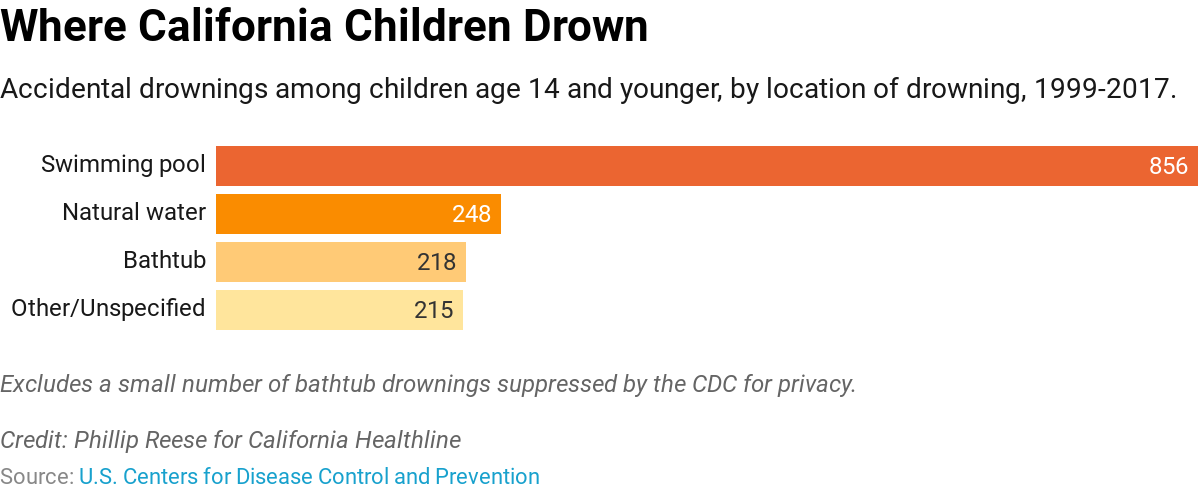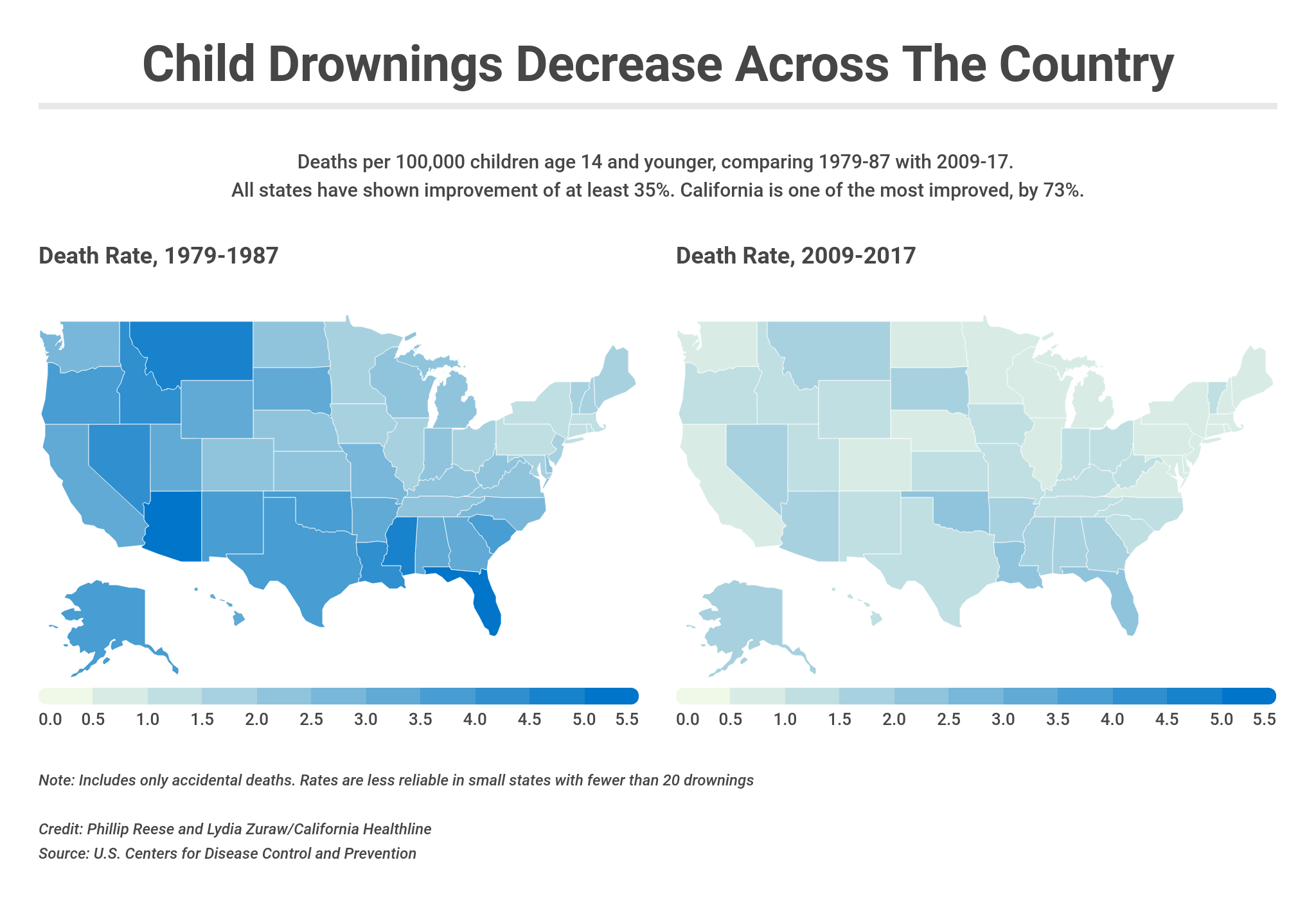Some welcome news at the height of summer swimming season: Children are far less likely to drown in California than they were in the 1980s — and child drowning rates have continued to fall even in the past decade, according to data from the Centers for Disease Control and Prevention.
The nation as a whole has experienced a similar, though less dramatic, decline, with drowning rates for children age 14 and younger now about one-third of what they were in the early 1980s.
Experts say state and local laws that require more fencing and security features around family swimming pools have made a difference, along with increased awareness of the dangers of letting young children swim alone.
From 1980 to 1982, 586 California children age 14 and younger died in accidental drownings, a rate of 3.7 deaths per 100,000 children, federal data show. The pace fell sharply in the 1990s, to a rate of about 1.4 deaths per 100,000 from 1999 to 2001. From 2015 to 2017, 186 children drowned in California. That figure translates to 0.8 drownings per 100,000 children.
Nationally, the drowning rate for children age 14 and younger was 2.9 per 100,000 over three years from 1980 to 1982 (4,417 deaths). By comparison, from 2015 to 2017, that rate fell to 1.1 per 100,000 (2,051 deaths).
Despite the improvements, drowning remains the nation’s leading injury-related cause of death for children ages 1 to 4, and children in that age group are most likely to drown in a swimming pool rather than a natural body of water. Highly publicized cases, like the June death of River Smith, the 3-year-old son of country singer Granger Smith, are a reminder of the risks. River drowned in the pool at his family’s Texas home, while his father and siblings played nearby.
“Often drowning is silent; it happens in 20 to 60 seconds,” said Adam Katchmarchi, executive director of the National Drowning Prevention Alliance. “Parents don’t realize how quickly that can happen to their children.”

Nadina Riggsbee, founder and president of the California-based Drowning Prevention Foundation, said the sharp decline in accidental drownings in California is a direct outgrowth of strict uniform building codes.
“We have the strongest, most stringent pool-fencing law in the nation, in the world, actually,” Riggsbee said. “We suggest to other states: Why don’t you mirror the California law?”
Riggsbee’s 2-year-old-daughter died and her 14-month-old son was severely injured in the late 1970s when a babysitter briefly left the two unattended at their home in San Ramon, a city in Contra Costa County. The babysitter had neglected to lock a sliding door after letting out the family dog, and the children exited through the door to the pool.
A few years later, Contra Costa County became the first county in the nation to pass a regulation requiring fencing around pools, Riggsbee said. She and other advocates pressed other communities to adopt similar ordinances. Their greatest success came in the late 1990s, when the state legislature passed the Swimming Pool Safety Act.
The statewide law requires that new pools are accompanied by one of the following safety features: a fence that separates the pool from a home; a robust pool safety cover; exit alarms on doors leading from the home to the pool area; self-closing and self-latching doors leading from the home to the pool area; or a safety device as effective as those four measures.
In 1995 and 1996, before the law took effect, 269 California children died from accidental drowning. By comparison, in 2016 and 2017, 125 California children drowned — a drop of more than 50%.
The law was amended in the mid-2000s to allow for two other types of safety measures: a pool alarm that sounds upon unauthorized entry into the water, or a removable mesh pool fence with self-closing, self-latching doors.

National safety organizations continue to push for more states and cities to adopt uniform standards and have embraced as a model the International Swimming Pool and Spa Code. The code requires physical barriers around pools and sets standards on gates and latches. So far, 21 states and more than 180 local agencies have adopted the code, industry data show.
Even with statewide standards, child drowning rates vary across California. Counties in the state’s arid Central Valley — known for its long, scorching summers — tend to have higher child drowning rates than the rest of the state.
“There are more days and months of heat,” Riggsbee said. “The families are using the pools more frequently.”
Riggsbee and other advocates hope a California law enacted last year will result in even fewer child drownings in years to come. Under the law, newly installed or remodeled private pools must feature two safety measures, rather than just one.

Phillip Reese is a data reporting specialist and an assistant professor of journalism at California State University-Sacramento.


